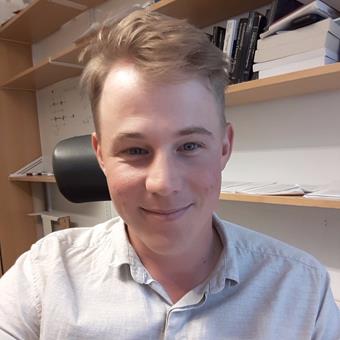“This is not the case for some materials, such as materials with very high ionic conductivity and those where the building blocks are not only atoms but also molecules. Several of the perovskites that are promising materials for solar cells are of this kind”, Johan Klarbring, doctoral student in theoretical physics at Linköping University, tells us.
Perovskites are defined by their crystal structures and come in different forms. Their constituents can be both atoms and molecules. The atoms in the molecules vibrate, but the complete molecule can also rotate, which means that the atoms move significantly more than is often assumed in the calculations.
Dynamically disordered solid materials
Materials that show this atypical behaviour are known as “dynamically disordered solid materials”. Dynamically disordered solid materials show immense potential in environmentally sensitive applications. Materials that are good ionic conductors are, for example, promising in the development of solid electrolytes for batteries and fuel cells, and for thermoelectric applications.However, the properties of materials have been tricky to calculate theoretically and researchers have often been forced to use time-consuming experiments.
Jonas Klarbring has developed a computational method that describes accurately what happens when these types of material are heated and undergo phase transitions. Johan Klarbring and his supervisor, Professor Sergei Simak, have published the results in the scientific journal Physical Review Letters.
Bismuth oxide
They have studied bismuth oxide, Bi2O3, a material known to be a very good ionic conductor. This oxide, where current is conducted by oxide ions, is the best oxide ion conductor of all known solid materials. Experiments have shown that it has a low conductivity at low temperatures, but when heated it undergoes a phase transition into a dynamically disordered phase with high ionic conductivity.“The article in Physical Review Letters describes how we have been able for the first time to theoretically describe the phase transition in bismuth oxide, and calculate the temperature at which it occurs. This provides an important theoretical basis for the development of, for example, electrolytes in fuel cells, where it is important to know exactly when the phase transition takes place”, says Johan Klarbring.
“I start from an ordered phase, which is well-described by conventional methods. I then use a technique known as ‘thermodynamic integration’, which I have adapted to deal with the disordered motion. The ordered phase is coupled to the disordered one, with the aid of a series of quantum mechanical calculations, carried out at the National Supercomputer Centre at LiU.”
Perovskites next
The theoretical calculations are in full agreement with how the material behaves in laboratory experiments.The researchers now plan to test the method on other interesting materials, such as perovskites, and on materials with high lithium ionic conductivity. The latter are of interest for the development of high-performance batteries.
“Once we have a deep theoretical understanding of the materials, it improves the possibilities to optimise them for specific applications”, concludes Johan Klarbring.
The research is financed by the Swedish Research Council and the Swedish Government Strategic Research Area initiative in Material Science on Functional Materials at Linköping University.
The article: Phase Stability of Dynamically Disordered Solids from First Principles, Johan Klarbring, Sergei I. Simak, Linköping University, Physical Review Letters 121, 2018. DOI 10.1103/PhysRevLett.121.225702
Translated by George Farrants

